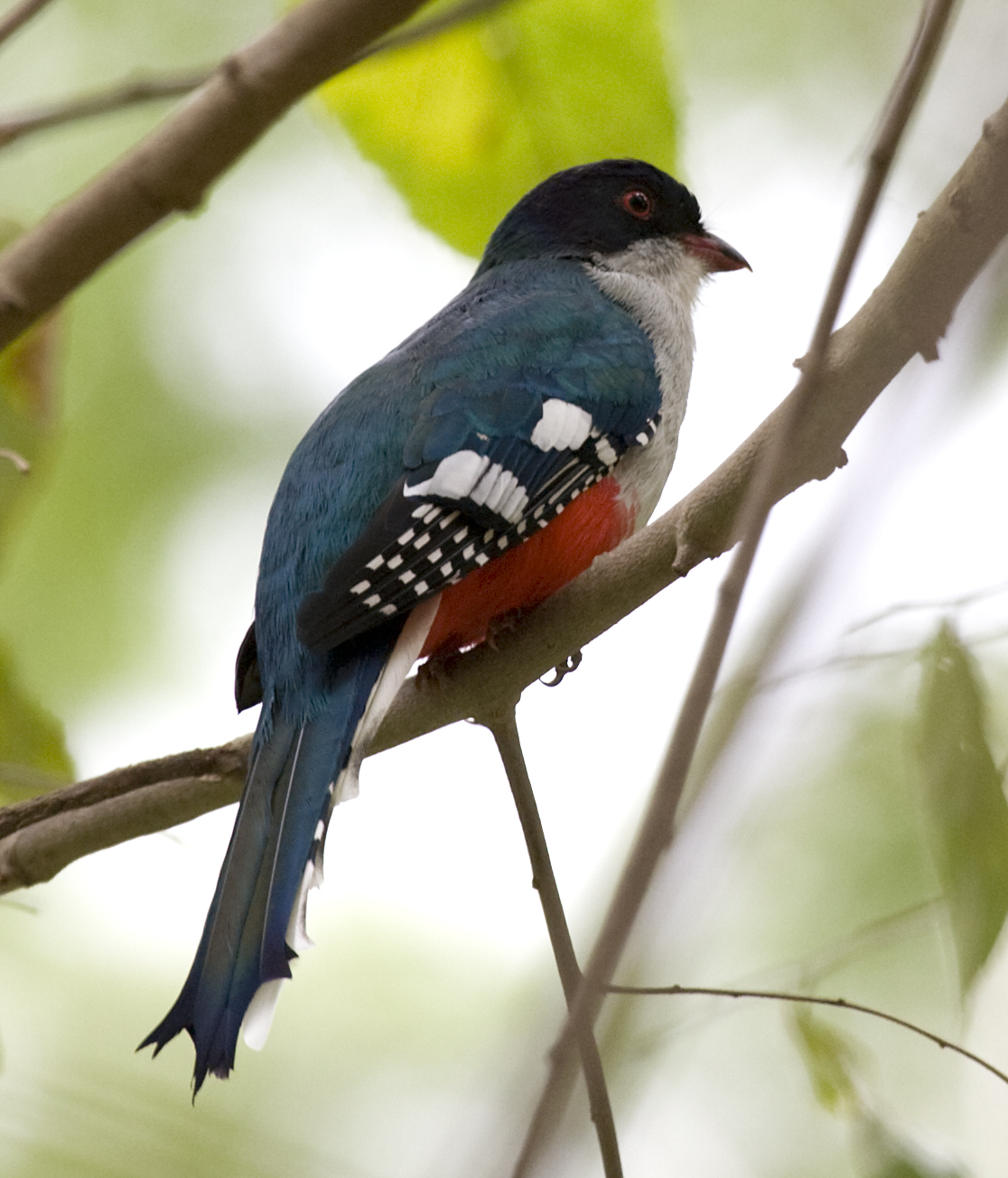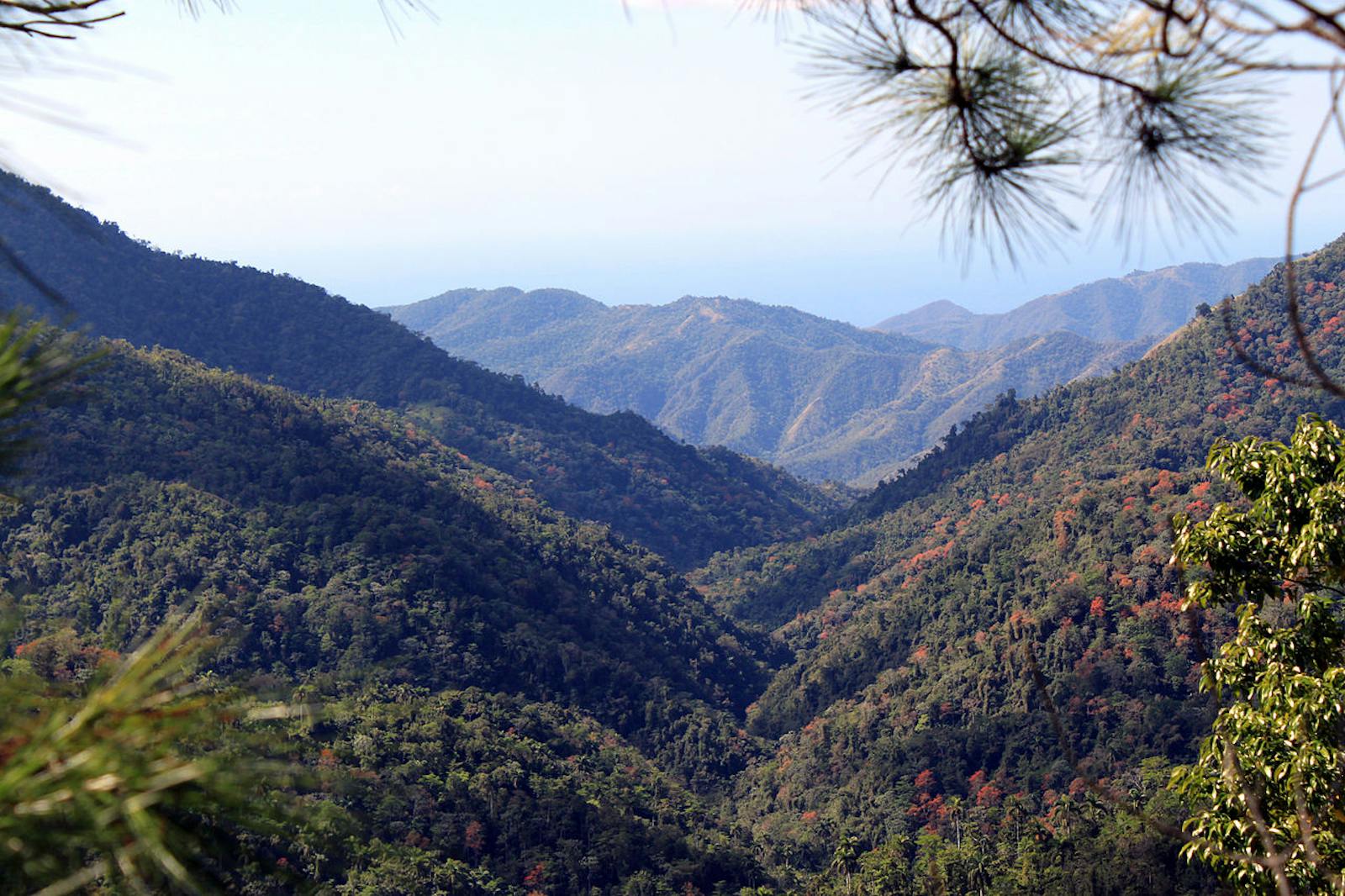Cuban Moist Forests
The ecoregion’s land area is provided in units of 1,000 hectares. The protection goal is the Global Safety Net (GSN1) area for the given ecoregion. The protection level indicates the percentage of the GSN goal that is currently protected on a scale of 0-10.
Bioregion: Caribbean Islands (NT26)
Realm: Central America
Ecoregion Size (1000 ha):
2,145
Ecoregion ID:
459
Conservation Target:
64%
Protection Level:
3
States: Cuba
The prehistoric looking Cuban solenodon (or “almiqui” as it is locally known) is only found in eastern Cuba, where it has survived the age of the dinosaurs. It resembles a cross between a large brown rat and an opossum and is unique as a mammal that produces venomous saliva—it is among the top most evolutionarily distinct mammals on Earth. Solenodons are primarily nocturnal and search at night to hunt for insects and small animals with their venom, or forage for fungi and arboreally for fresh fruits and berries when needed.
The Cuban solenodon was previously thought to be extinct in the 1970, and while recent sightings have re-established its presence they remain incredibly rare to find because of their nocturnal and burrowing behaviour; they are also threatened by habitat loss and predation by introduced species such as the Asian mongoose.

The flagship species of the Cuban Moist Forests ecoregion is the Cuban trogon. Image credit: Creative Commons
This ecoregion is distributed in multiple patches of different sizes along the ranges and highlands of the island of Cuba. The Cuban Moist Forests are recognized for the conditions of continuous moisture with precipitation above 2,000 mm annually and lack of dry season. Depending on altitude, this moist region is subdivided into lowland forest below 400 m, submontane forest at 400-800 m, and montane forest at 800-1,900 m. Lowland rainforests are the most biologically rich of wet forests, with canopies reaching heights of 40 m, often including aguacatillo, crabwood, and acana among other tree types. This vegetation area is currently being displaced by cacao and coffee crops.
Mountain rainforests are found in the central zone of Cuba, in the mountains of Sierra Maestra, Sierra de Imías, and Sierra del Escambray. They reach heights up to 30 m and consist of two tree stories (aguacatillo, yellow oliver, cuajaní etc.) and one shrub story. Cloud forests at elevations above 1,000 m in the Sierra de Escambray and the mountains of Oriente, particularly in the Sierra Maestra, consist of two canopy stories (barril, Torralbasia cuneate etc.) and reach a height of 20 m.
Birds, insects, and arachnids stand out for their high diversity and level of endemism in the Cuban Moist Forests ecoregion. Birds include the fairy hummingbird, Cuban trogon, and the critically endangered ivory-billed woodpecker among others. As for reptiles, in the Moa Sagua Baracoa region there are 58 species, 14 of which are strict endemics. In the Sierra Maestra there are approximately 55 species, 9 of which are strict endemics. In Guamuhaya, 4 of 41 known species are strict endemics and in the Guaniguanico region, 5 of 38 known species are strict endemics. Notable mammals include the eared and Desmarest’s hutia and the endangered Cuban solenodon.
The forests are better conserved in the east than the west of Cuba, particularly at high altitudes and where the land is too rugged for agriculture. In the east there is a collection of biosphere reserves and national parks, notably the Sierra Maestra Great National Park Integrated Management Area (5,270 km2), that retain a high level of moist forest. In the central east the Desembarco del Granma National Park (258 km2)—a world heritage site since 1999—is joined by two smaller national parks relatively spread out.
In central Cuba there is the Escambray Integrated Management Area (1,870 km2) and a smaller natural landscape and tourist area that protect part of the ecoregion. In the west, the Mil Cumbres Integrated Management Area (166 km2) and the Sierra del Rosario Biosphere Reserve (100 km2) provide some protection for the ecoregion but are relatively small.
This ecoregion has lost about 70% of its original habitat and the level of fragmentation is considered medium-low, but enough to hamper conservation efforts, particularly in the east. The greatest threat to the ecoregion is the cocoa and coffee agriculture business that are replacing much of the original true rainforest areas. Other threats to these forests are mining, the proximity to urban centres, the extraction of wood products, pressure from cattle ranching, the sale of endangered species (particularly parrots), tourism activity, and the introduction of non-native species (mongoose, cats, wild dogs).
The priority conservation action for the next decade will be to: 1) integrate natural resource management within the cocoa and coffee agriculture, especially shade grown and “wildlife friendly” coffee techniques; 2) increase connectivity through corridors focusing on eastern Cuba’s wide variety of protected areas; and 3) increase enforcement to reduce illegal logging and the illegal wildlife trade.
Citations
1. D’Ambrosia, U. 2018. Cuba. https://www.worldwildlife.org/ecoregions/nt0120. Accessed July 19, 2018.
2. Bisse, J. 1988. Árboles de Cuba. Editorial Científico-Técnica, Ciudad de la Habana, Cuba.
3. Dinerstein, E., D. M. Olson, D. L. Graham, A. L. Webster, S. A. Primm, M. P. Bookbinder, and G. Ledec. 1995. A conservation assessment of the terrestrial ecoregions of Latin America and the Caribbean. DC.: WWF and The World Bank.



